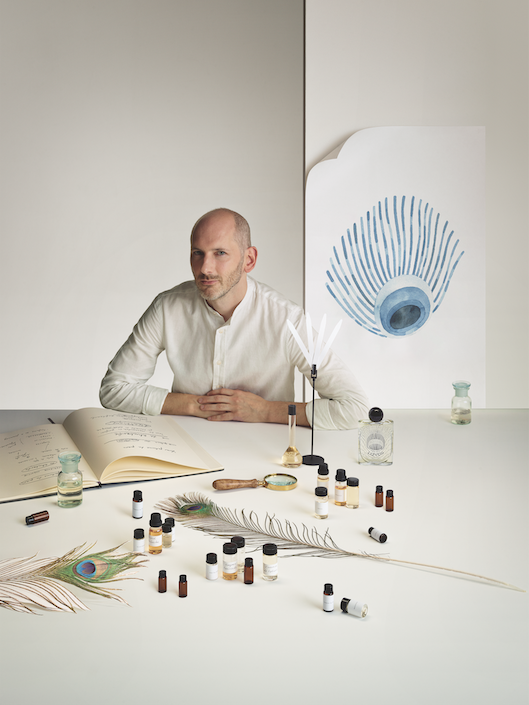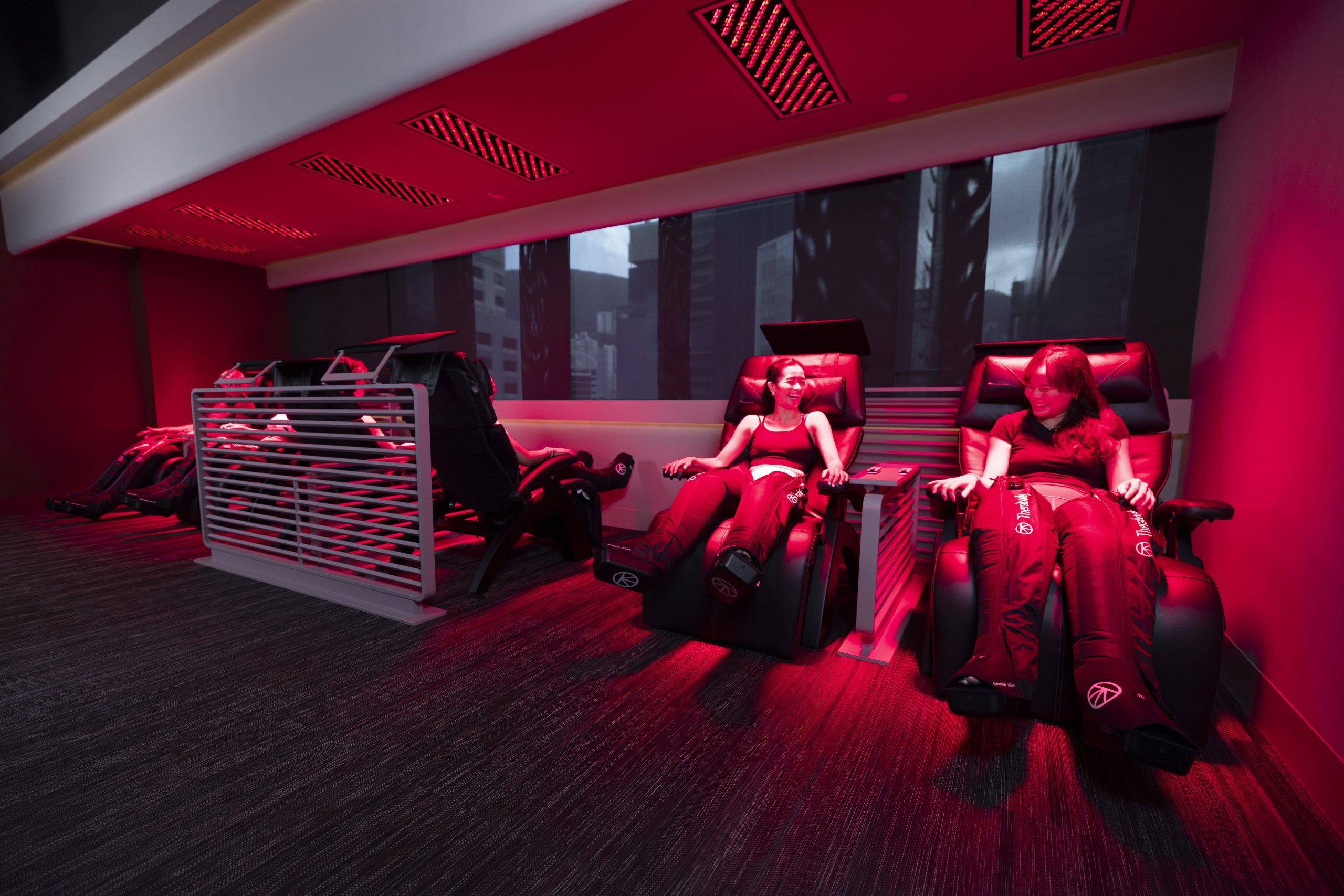Tucked away in a corner of Indonesia’s Anambas archipelago are six privately owned islands that make up sustainable luxury retreat Bawah Reserve. Zaneta Cheng makes the journey from Hong Kong via Singapore and discovers a lost world of untold delights

It’s just after breakfast and the Indonesian sun, while quite fierce, has yet to reach peak midday heat. Not that it really matters to us, because we’re sitting under umbrellas with cups of frozen grapes and pots of tea with ice in the glass to keep it cool. And there’s a breeze. We’ve just spent the morning running over to the hammock in the middle of the water, which is still reachable by foot along the sandbank thanks to early-morning low tide. The sand is soft and easy to sink into. It’s not quite powder but fine enough for us to see our solitary footprints clearly defined in the stretches where the water can’t quite reach to wash them away. The rest of the morning is spent on the beach switching between sitting on our sun bed and in the sea as the waves gently break over us. There’s not a soul to be seen aside from the two of us and the occasional staff member.
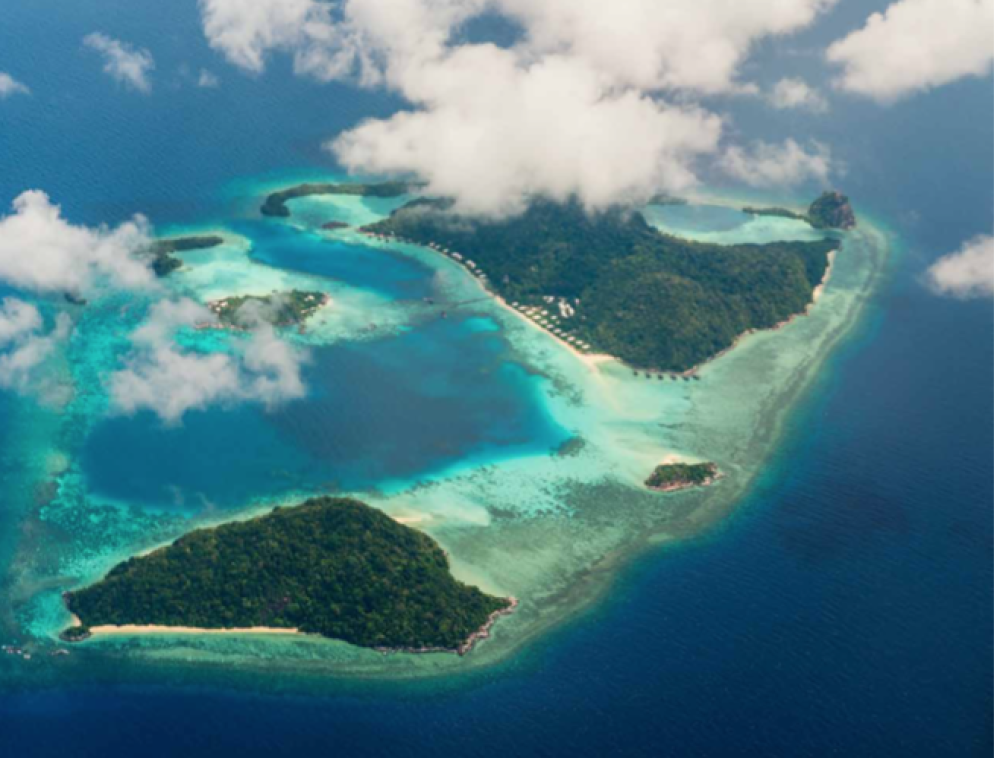
We’re on the northern side of Bawah island. It’s one of six islands that form the Bawah Reserve that sits within three lagoons at the southern tip of the Anambas archipelago, just about 150 nautical miles from the north shore of Singapore. To get there, we take a flight to Singapore and spend the night. The amphibious planes that take visitors to the island only run once in the morning there and back, so we’ve been told it’s easier if we allow ourselves the night in the Lion City. From there, a driver from Bawah picks us up in the morning and takes us to the ferry terminal, which will take us to Batam, the Indonesian city where the amphibious planes that will fly us to the island are parked.

If it sounds arduous, it is rather. But how else is one meant to feel the sense of complete removal from life as we know it? To be frank, we don’t yet know this as we fly in on the sea plane, our ear plugs inserted, peering out the window of the 12-person aircraft into the blue seas. During the 80-minute flight, we spot outcrops of coral and occasional islands. These become few and far between until all that’s left is open seas. And then the islands appear – along with stretches of water that are layers of iridescent blue, turquoise, cerulean and periwinkle. The forests on the island are dense and lush, and there’s a long boardwalk that splits into two. We land in the water with a splash and the memory of the journey before seems to dissipate.
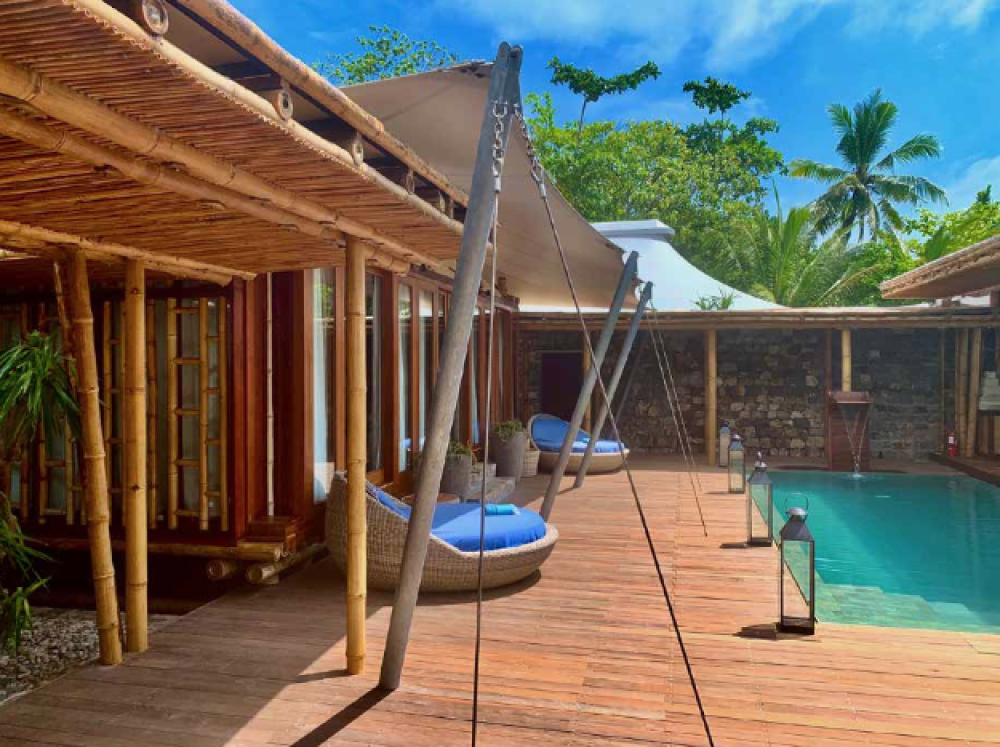
We’re met with a group from guest relations bringing cold towels and drinks before we’re escorted by foot down the boardwalk to our villa. The island has 36 villas. That’s not including the five villas on Elang, the private island across the way, which is only available as a total buyout. It’s a popular option for large families and groups of young families on holiday, with its own restaurant, waterslide, activity centre, tennis court and spa. Bawah is the largest of the six islands with restaurants, more tennis, a boutique and two spas. Villas are over-water, beach-facing or set in the jungle.
Also see: Celebrate 20 years of turtle rehabilitation with Jumeirah Al Naseem in Dubai
Ours is over-water, with a staircase leading into the sea. Done in traditional Indonesian style, the roof is a long A-line and, I’m told, much of the building material is ecologically sourced from used, sustainable bamboo and driftwood and wood from trees that were cleared on the island to make way for the villas. The coral is literally right at our doorstep in glorious technicolour. We spot this without needing to set foot in the sea because the water is just that clear.
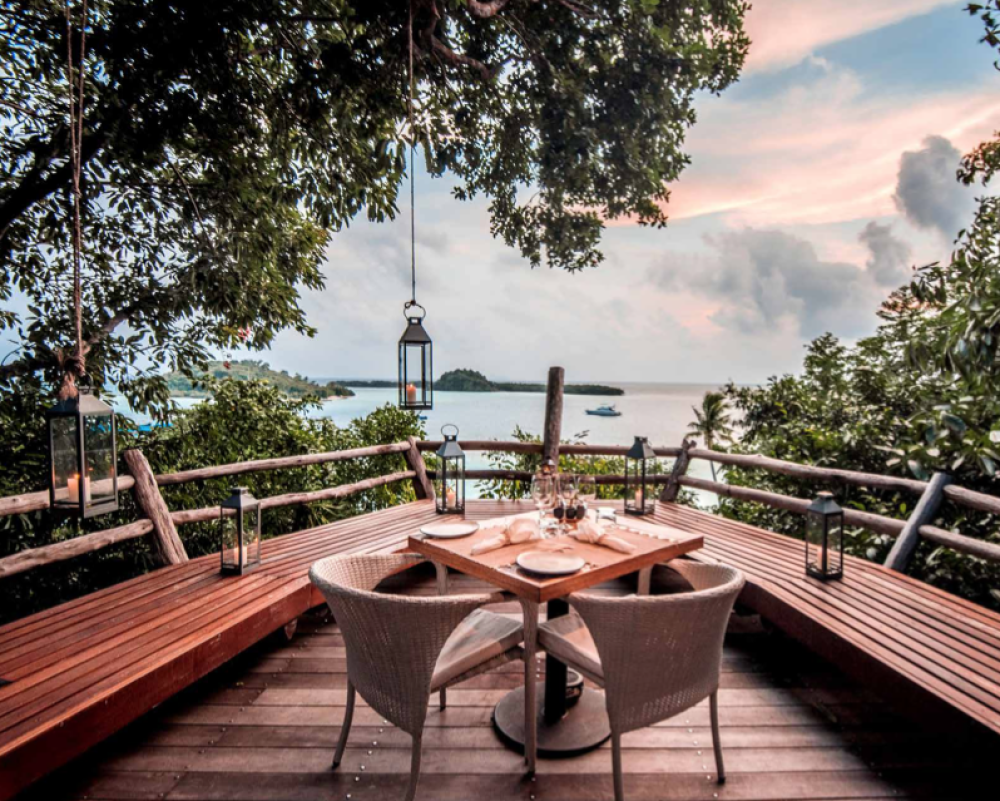
Our things are put away in the villa, which is appointed to reflect the castaway nature of the island. Bronze sinks and tubs add a glimmer amidst the wood of the bathroom. Clothes are provided as are tote bags and hats for the stay, because there’s a strict 15kg luggage limit on the seaplane over and daily complimentary laundry is provided so there’s no real need for much clothing. Or any clothing really, if one should so choose, because the island is so private that while we know guests are here – wooden boards with guests’ names written on them are hung at each villa door – we never really see anybody aside from mealtimes so it’s as if the island is entirely ours save for the friendly and attentive staff.
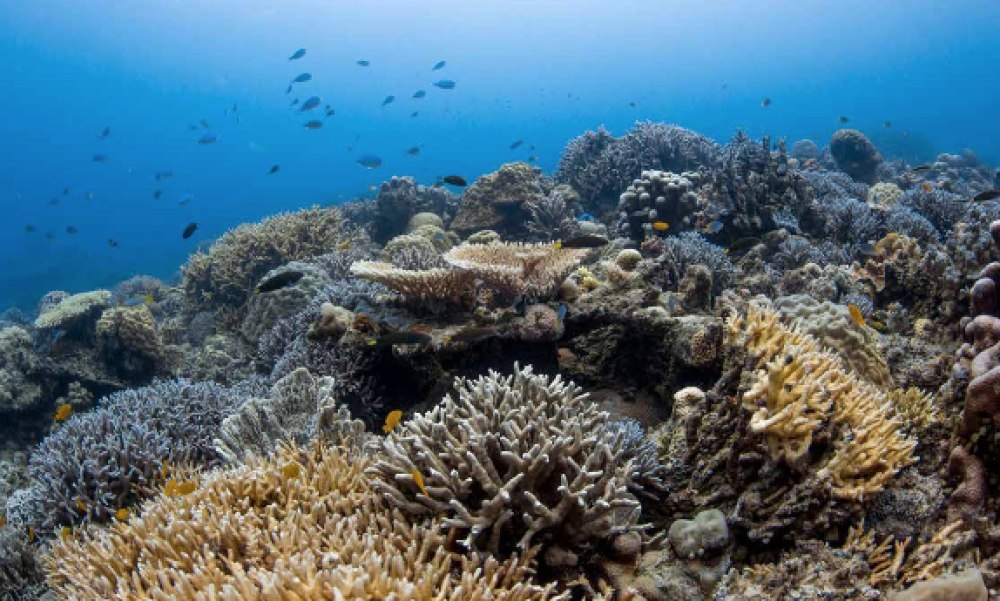
We head to The Boat House, where lunch is served daily. Food and drink except for alcohol is included with the stay, so we choose our menu with abandon. On the first day, it’s Indonesian. On the second, we ask to see if the chef can make sushi. He can. On the third, we’re peckish for grilled local prawn and it’s a delight. We just so much as name it and the team does their best to deliver. Much of the herbs and vegetables on the menus is grown in the permaculture gardens onsite and used across the restaurants. Dinner is served at Tree Tops, a restaurant set in the canopy with a view overlooking the jetty and a perfect spot for sunset if you look to the right. Those looking for happy hour can traipse up the circular stairway to the Jules Verne bar for a tipple before dinner. There’s also The Grouper, the poolside bar, which we don’t get the chance to visit because we’re much too occupied with the activities available.

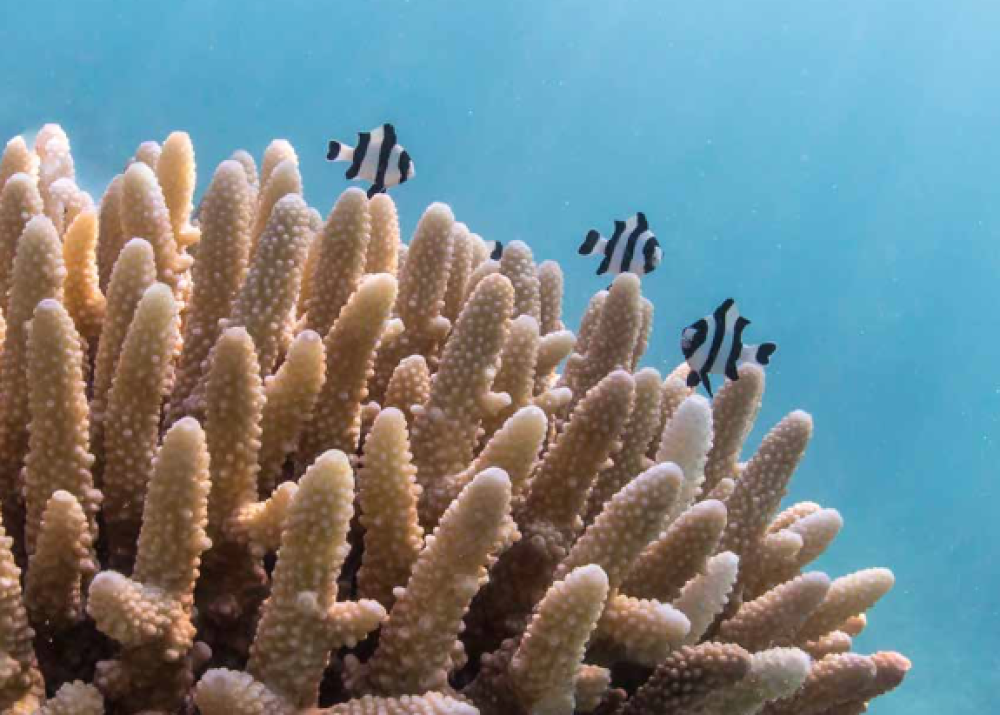
Boats take guests out twice daily, once in the morning and once in the late afternoon, for snorkelers to admire the thriving marine life. Diving is also available. Tim Hartnoll, the owner of Bawah Reserve and Singapore-based shipping magnate, bought the islands with the aim of recovering coral reefs damaged by dynamite fishing. By the looks of it, they are flourishing. We opt for the sunset cruise, which takes us on a tour of the western side of the islands. We see birds and turtles and bats. There are occasionally clouds by the islands, we’re told, but on the day we set out, with juices and treats, the skies are a clear canvas for a fiery golden sunset punctuated by clouds that are almost painted on the sky for effect.
Our guides are knowledgeable about the island – after all, they live here for most of the year. Small beaches are pointed out as a good private castaway picnic or dinner spot. Hiking trails are also explained, and we’re given advice as to which trail is best for sunrise and which is best for sunset. There’s a particular beach where hatchlings are released during the late summer months as part of the island’s turtle nesting project. One guide reveals himself to be a budding photographer and happily snaps us against whichever backdrop we ooh and aah over. There’s also paddle boarding and glass kayaking for those wanting to observe life in the sea without getting too wet.

We’re here mostly to get away from it all and find as little to do as possible to recover from ailments caused by the perennial rat race. For better or worse, both of us are slightly under the weather when we get to the island so the gentle rush of waves and the soft breeze with easy service is the perfect treat. What came as a surprise – not because it was meant to be one so much as I had missed the smaller print – was the promise of a daily massage included in the stay. The menu is extensive and the view of the canopy from the therapy rooms is designed to send even the weariest souls into various states of bliss. There are aloe vera massages as well as charcoal facials, and mud wraps and scrubs using local honey and coffee. Traditional Indonesian teas, which are available as a class and as a morning drink, are given to us after treatment. Mine is consistently ginger-based, which helps when I come down with traveller’s sickness.
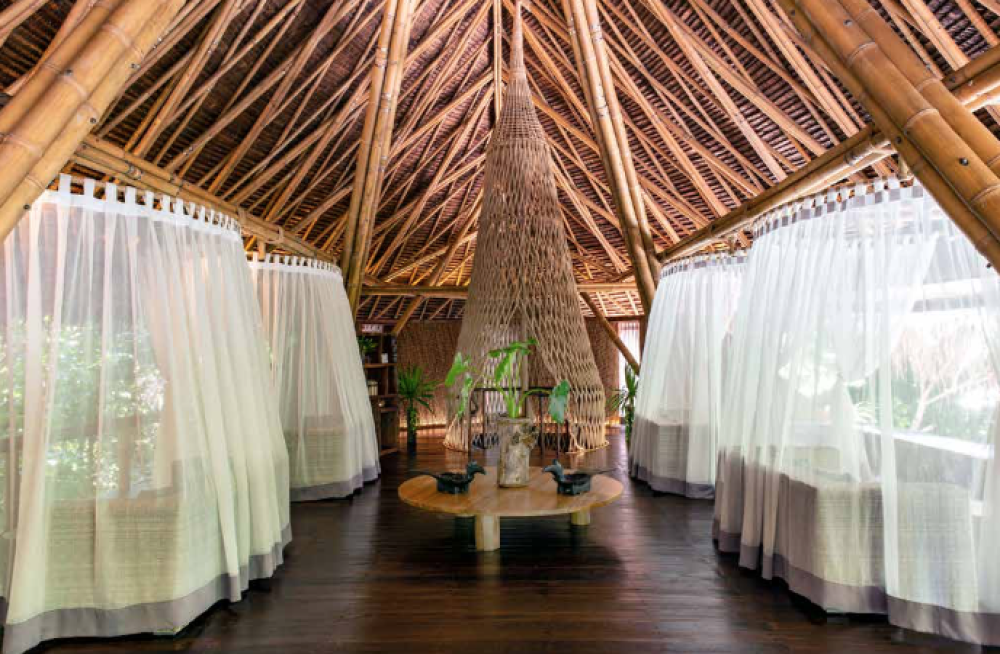
It’s an unfortunate turn of events, which sees me missing out on a tour of the permaculture gardens, an Indonesian cooking class for lunch as well as the evening outdoor barbecue and movie night. What saves me, however, is the kitchen’s ability to cook the exact food that I would need in the given situation at home. Chinese porridge is delivered to my villa along with medicine from the island’s clinic. Guest relations is available around the clock so my prescription is issued after a consultation with the clinic via WhatsApp.
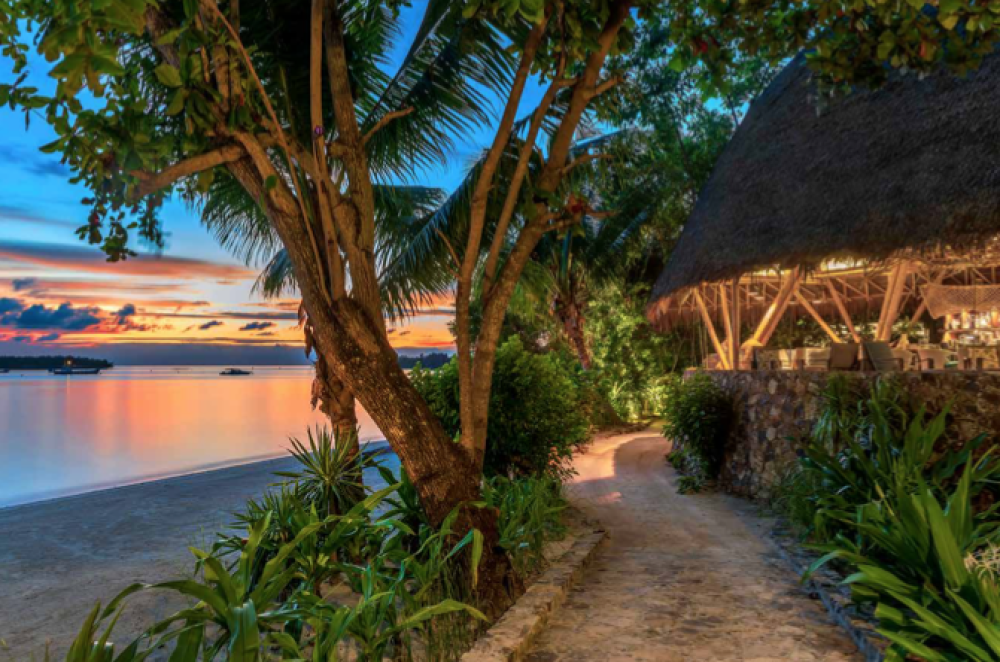
Properly nourished and medicated, I laze on the sunbed on the deck of my villa. And in the evening, after another sickness-mandated porridge, I continue to lie outside, listening to the rhythm of the lagoon, sipping from a water bottle given to us by the resort as part of an effort to minimise plastic across the island. Sleep comes easier and it’s less of an effort to drift off. Nights at the over-water villa are blissfully silent as I imagine it would be for even the jungle and deluxe beach villas, which might only be punctuated by the larger party they can accommodate. In sickness and in health, Bawah Reserve may be the best place on Earth to rest, recover and truly get away from it all. And given its stewards’ commitment to preserving this pristine slice of paradise, one can expect it will remain so for a long time to come.


